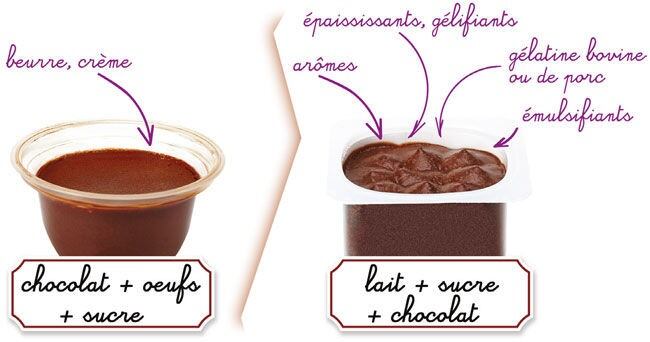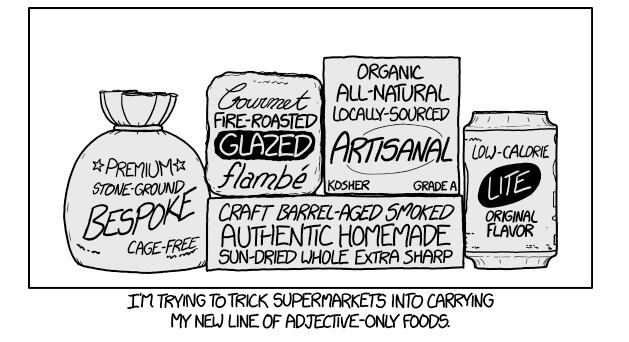Que Choisir tested a range of fruit yoghurts, vanilla ice cream, pastry and chocolate mousse. Out of the 25 (simple, authentic or traditional) chocolate mousse products it surveyed, over half did not contain eggs – an essential ingredient in traditional recipe as the proteins in egg whites are responsible for the bubbly texture.
Instead, they contained emulsifiers such as mono- and di-glycerides of fatty acids, gelling agents such as carrageenan or thickeners such as gelatine, it said.
The consumer group said it recognises that scaling up a recipe to industrial quantities may require technical ingredients, such as texturisers or preservatives. This is needed in order to retain freshness, quality and food safety during the packaging, transport and storage of food.

But it added: "That does not justify the presence of certain substitute ingredients which have more to do with manufacturers’ desire to lower costs than technical constraints. Moreover, adding vegetable juice in a pastry or milk in a dessert mousse that claims to have an authentic recipe is absurd!”
Acacia gum: Additives can be traditional too
According to marketing manager at French acacia gum supplier Alland & Robert, Violaine Fauvarque, this cost-cutting or non-traditional argument does not apply to all food additives - take the case of acacia gum (also known as gum Arabic), she says.
“Acacia gum is actually an expensive hydrocolloid compared to other thickeners or compared to synthetic products like starch, so it is actually more of a quality guarantee to see that a manufacturer would use acacia gum rather than something else."
"As a natural, low processed ingredient coming from the acacia tree, [acacia gum] can absolutely be considered in traditional and artisan recipes, as it was already used thousands of years ago in Africa in food applications, before it started being used in Europe, and then all over the world,” she told us, adding that it is the principle component in traditional gum drops.
“Consumers know that processed food, even traditionally made, do contain functional ingredients. Because products sold in supermarkets must maintain their texture and appearance during their shelf life,” she added.
There is no EU definition of terms such as natural, traditional or artisanal although some member states have national legislation in addition to the EU’s Food Information to Consumers (EUFIC).
In France, for instance, the legal definition of home-made is applicable to food service operators while the term artisan has a specific definition regarding bread.
There may also be cases of ‘vertical legislation’ that apply to specific terms for certain categories.
“This is the case for instance, of natural mineral water, extra-jam, extra-virgin olive oil and traditional farm-fresh turkey which are legal denominations established in EU law,” said Sebastián Romero Melchor, partner at law firm Food Compliance International.
Clean, clear labels and careful reading
But according to Birte Day, policy advisor at UEAPME, the organisation which represents European crafts, trades and small businesses: "It seems a possibility that consumers can get misled by ‘false’ claims.”
Day said a definition of terms such as traditional, natural or artisanal would be useful for the consumer as well as for micro, small and medium-sized food businesses. UEAPME has asked the European Commission for a definition of handcraft in the context of food but so far no legislative act has followed.
Que Choisir, for its part, advises consumers simply to carefully read the on-pack wording and ingredient lists: if you want a traditional chocolate mousse then make sure the product is called chocolate mousse, and steer clear of products called 'milk dessert', 'milk mousse' or 'dairy specialty'.

Luca Bucchini, managing director at Hylobates Consulting and food law expert, sits somewhere in the middle.
“I think a definition at the EU level would be useful given the growing interest of consumers and businesses in these claims. In fact, it would help traditional and artisanal manufacturers sell their wares across the EU in the same way as protected designation of origin labels (PDOs) have helped traditional producers," he said.
“However, it would be unwise to restrict the use of all terms that appeal to consumers - as the French consumer group suggests consumers have to read the list of ingredients to ensure the product meets their expectations.”
Irish guidance notes 'a good way forward'
The Food Safety Authority of Ireland (FSAI) published a guidance note - produced in consultation with industry and consumer representatives - which advises food business operators how to use marketing terms in a way that is not misleading. The FSAI says it is intended to compliment the legislation on food information to
consumers (EUFIC).
“An enforcement officer with concerns about the use of a marketing term covered by the guide would first take it up with the food business and see if changes can be made in a reasonable time-frame,” said communications manager for the FSAI, Jane Ryder.
“If that process failed and the issue proceeded to prosecution, then it would be up to the courts to decide if consumers were being misled and they may or may not chose to consider the information in the guide.”
According to Bucchini, the Irish guidance notes are “a good example of a way forward”.
"This is something that the European Parliament may think to mull over."
